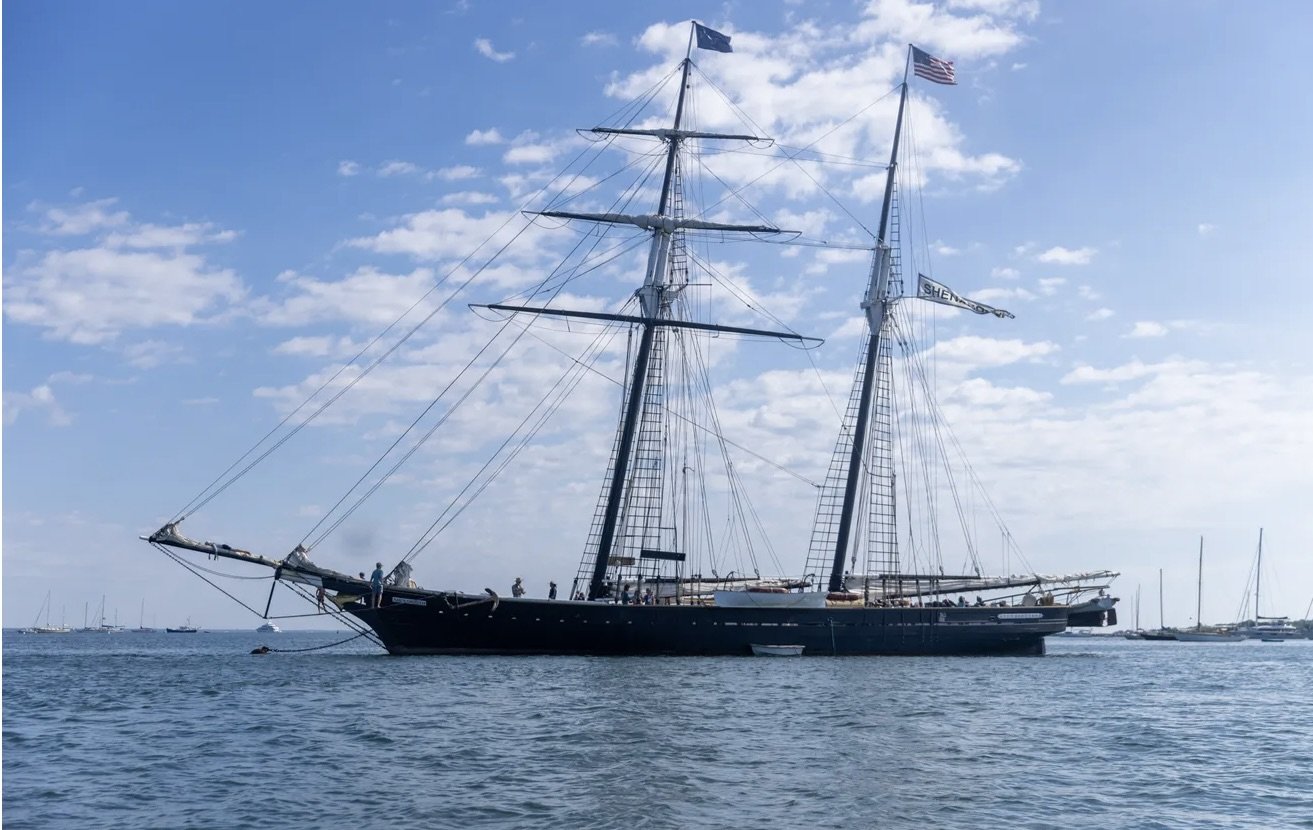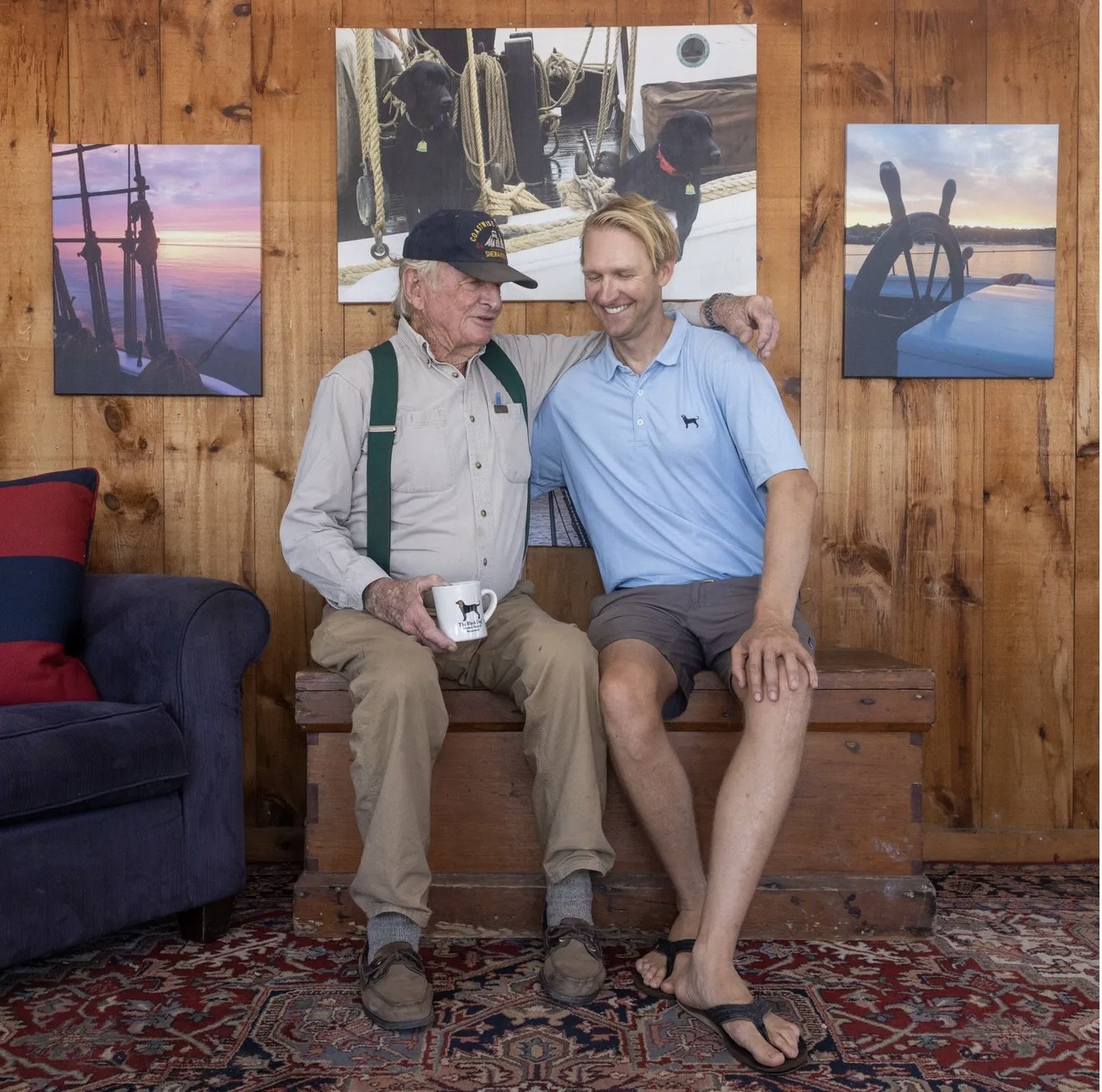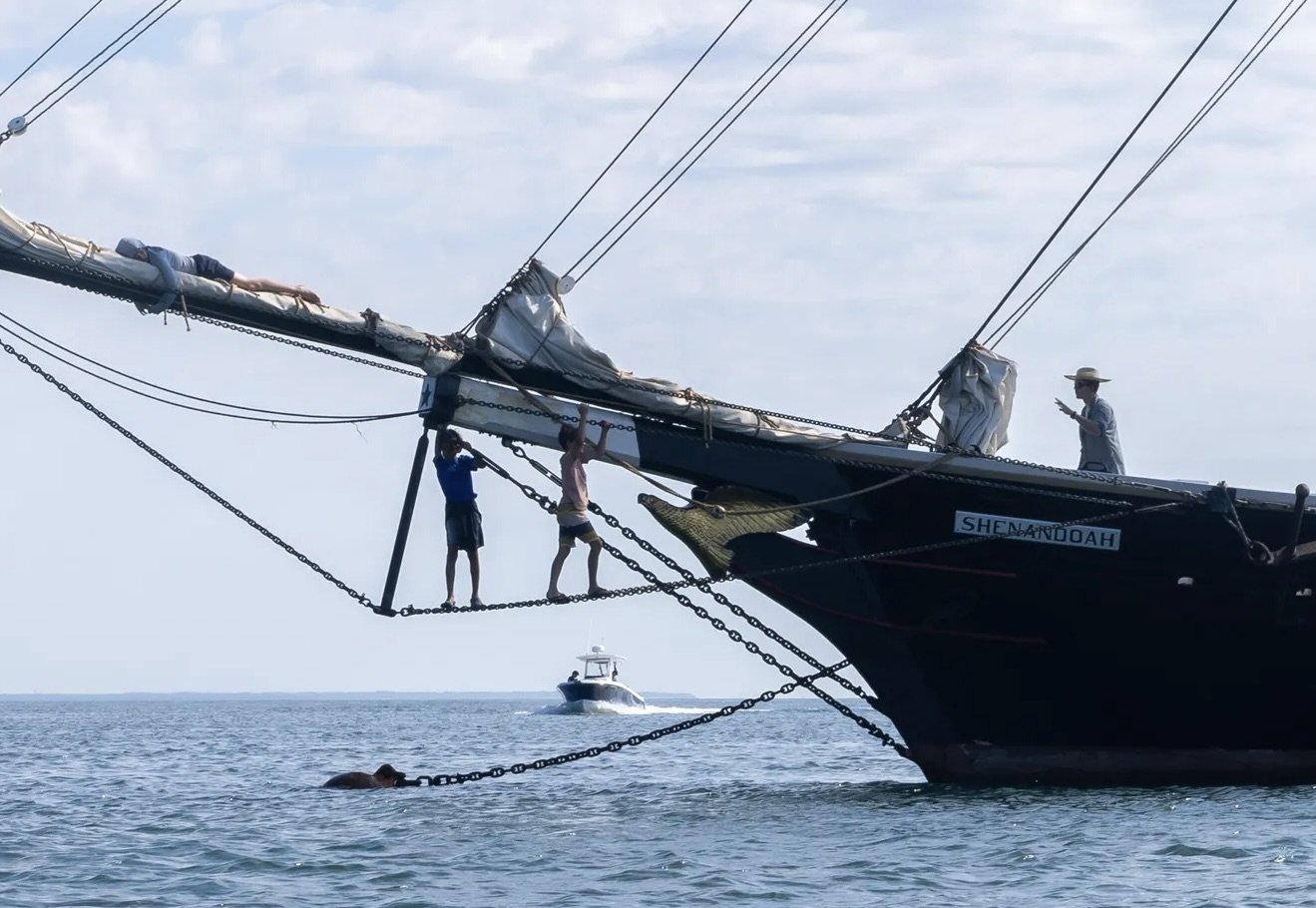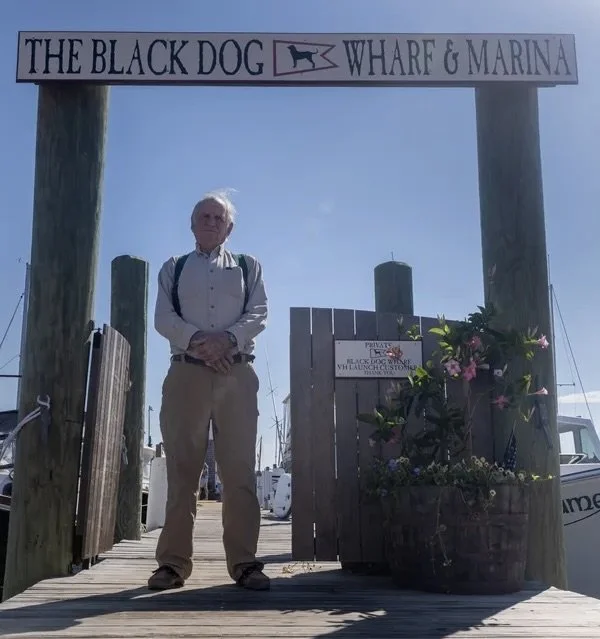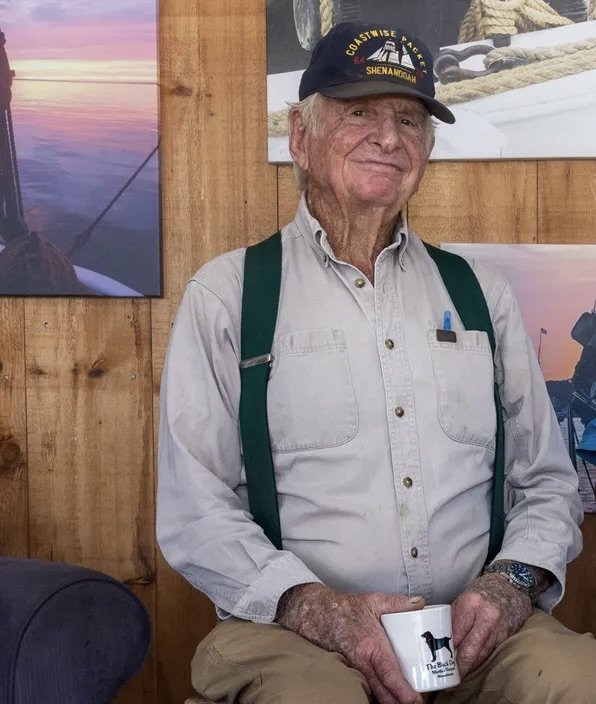Cape Cod Times
'Next generation': $7M campaign launched to replace iconic Martha's Vineyard educational tall ship Shenandoah
The tall ship Shenandoah sways in the waters off Vineyard Haven on a recent sunny morning. Sophie Proe
Rasheek Tabassum Mujib – Cape Cod Times
Published 5:27 am ET Aug. 10, 2022
VINEYARD HAVEN — The iconic educational tall ship Shenandoah has been sailing from Vineyard Haven since 1964. Its new owners say it is time to build a new tall ship to replace Shenandoah and preserve its legacy in the coming years.
FUEL, a nonprofit organization based on Martha’s Vineyard, has launched a campaign, “Shenandoah: The Next Generation,” to raise $7 million to build the new ship, which would be made of steel rather than wood and have an engine and two generators.
The Shenandoah's original captain, Robert Douglas, the now-90-year-old founder of the Black Dog restaurant and related enterprises, retired and turned over the Shenandoah to the organization in 2020. After extensive repairs to the ship, FUEL has this summer started continuing Douglas' legacy of onboard educational voyages, including June to September weeklong trips for youth.
Douglas also designed the new ship, which is due to start sailing in 2025 if all the money can be raised in time.
What is FUEL?
Founded in 2017 by Ian Ridgeway and Casey Blum, Foundation for Underway Experiential Learning (FUEL) offers weeklong voyages for children aged 9-17 as well as school field trip opportunities and charter sailing. Both Ridgeway and Blum served as former captains of the tall ships Shenandoah and the Alabama, another Black Dog tall ship.
FUEL was founded to continue Douglas’ legacy of hosting voyages to teach children the ins and outs of sailing and maritime culture.
“It was created to help youngsters in their development journey and our curriculum is designed for a positive youth development,” Ridgeway said.
Shenandoah captains Robert Douglas, left, and Ian Ridgeway share a laugh in a Vineyard Haven office. Sophie Proe
“There are three pillars of the program: personal development, environmental stewardship and mariner competency,” Blum said. “Our mission is to expose them to maritime culture and trades, inspire them to find an interest in the job opportunities on the water, and teach the sailing basics.”
During the weeklong voyages, up to 30 students with nine staff members participate in all the onboard activities with the ship crew. According to Blum, participants learn about weather patterns, resource management, composting food, waste management aboard a ship and conserving and utilizing the limited resources onboard.
Drawing from his own experiences, Ridgeway said the classroom learning setting is not always ideal for everyone and experiential learning experiences can form stronger personal development traits.
“As a child, I never thrived in a classroom setting, but I loved learning,” he said. “When I went aboard the Shenandoah, it gave me an incredible amount of confidence, made me feel valued for the energy I had.”
This program helps young people who are still struggling with their identity and place in the world, giving them the developmental growth they need to figure it out, he said.
During their voyage, participants are not allowed to have access to their cell phones or other technology. On the first day, children get anxious about the lack of technology, but during the week — after experiencing an unplugged, authentic experience — they realize it is possible to survive without the devices, Blum said.
“At the end of the week, they transform into free thinkers, learn to be creative, try new things and form new friendships,” Blum said.
“Almost every voyage ends with kids leaving in tears, as they part ways back on the land,” Ridgeway said.
FUEL’s mission will expand into yearlong programs with the new ship, they say, with the goal to span multiple countries.
'Daughter of the Stars' and Capt. Douglas
In a Native American language, Shenandoah means “Daughter of the Stars.” The tall ship's name was inspired by a sea shanty of the same title. The Shenandoah, a square-rigged schooner with a rig height of 94 feet, has sailed for 56 seasons out of Vineyard Haven. Douglas and his ship hosted more than 17,000 people, mostly youth, on weeklong voyages in his "week at sea" sailing program from Vineyard Haven Harbor, according to the FUEL website.
The 152-foot-long topsail schooner was one of just two schooners in the harbor in 1964. Douglas designed the Shenandoah without an engine, following the traditional tall ship trend in the 1900s, the website background said.
Sam Shields, right, a captain in training, walks over to youths who are working at the tip of the Shenandoah tall ship in Vineyard Haven. Sophie Proe
The lack of engine, though, creates some limitations.
“As Shenandoah has no engine, it requires careful voyage planning," Ridgeway said. "It can sail to Nantucket and the farthest to Mystic, Connecticut for coastal cruising (but) not more than 20 miles from a harbor of refuge.”
It was in the 1980s that Douglas started inviting young people to spend a “week at sea” on the Shenandoah or Alabama, and that was how Ridgeway and Blum got involved.
In 2021, Douglas was presented with the 38th annual Creative Living Award by the Martha’s Vineyard Community Foundation. He recently celebrated his 90th birthday with friends and family, and a new book on Douglas’ life, “My Shenandoah: The Story of Captain Robert S. Douglas and His Schooner,” written by Douglas Cabral, was released Aug. 2.
Shenandoah: The Next Generation
But the story of the real Shenandoah is nearing its end. Without significant major repairs that would cost much more than $7 million, Shenandoah will not be able to sail for much longer, according to the co-founders of FUEL. Their idea is to use the money that might have gone to repairs to build the new ship, which would be more “accessible with easier navigation, and would accommodate many more people aboard at the same time,” said Ridgeway.
Captain Bob Douglas, 90, stands in front of the Black Dog Wharf & Marina sign in Vineyard Haven. Sophie Proe
FUEL plans to build the new ship in two phases, according to Ridgeway and Blum. The first would involve getting the hull of the ship built, including vital systems such as plumbing and power installations. The needed $3.25 million to complete the first phase is expected to be raised by the end of this year, they said
The remaining $2.75 million is needed to build the interior and install the rigging. The second phase would require local craftsmen and community participation, Ridgeway said.
“We are currently working with our board of advisors to identify foundations, local businesses and individuals who would be willing to donate,” said Ridgeway. “We have received significant donations and the response is really positive.” He declined to give details on donations received.
The final $1 million raised would be used for the ship’s endowment. The hull construction will take a year and a half, and then finishing up the construction will require another year, according to Ridgeway.
“We are expecting to get the new ship ready by 2025 (and) kids will be welcomed at the new ship during the summer,” he said.
The construction of the new ship hasn't yet started. Ridgeway said they hope they will have enough funds to begin by early 2023.
Douglas said that “to an uneducated eye, the current Shenandoah and the new ship will look pretty similar. Though the ships are similar in design, people would be able to make and plan longer trips with the new one.”
The retired captain said he began planning "a wonderful replacement" for the Shenandoah 52 years ago.
“Somehow it never worked out before and now FUEL is taking over the fundraising campaign as well as the process of building the ship,” Douglas said.
“The new ship is expected to expand Shenandoah’s legacy for the next 50 to 100 years,” Ridgeway said. “More students will benefit because of the year-round operation.”
The new ship will have a state-of-the-art engine room with a diesel engine and two full-powered generators, features missing in the current Shenandoah, according to Douglas. Another big difference between the two ships is the main body as Shenandoah was built with wood and the new one would be made from steel.
Due to the significant technical difference, the new ship would be able to offer 14-week trips, spanning multiple countries, whereas Shenandoah had limited navigation due to the lack of engines, said Ridgeway.
Tom Degrémont and Sam Howell of Langan Design Partners and Bill Preston of Marine Design are the three main architects for the new ship.

